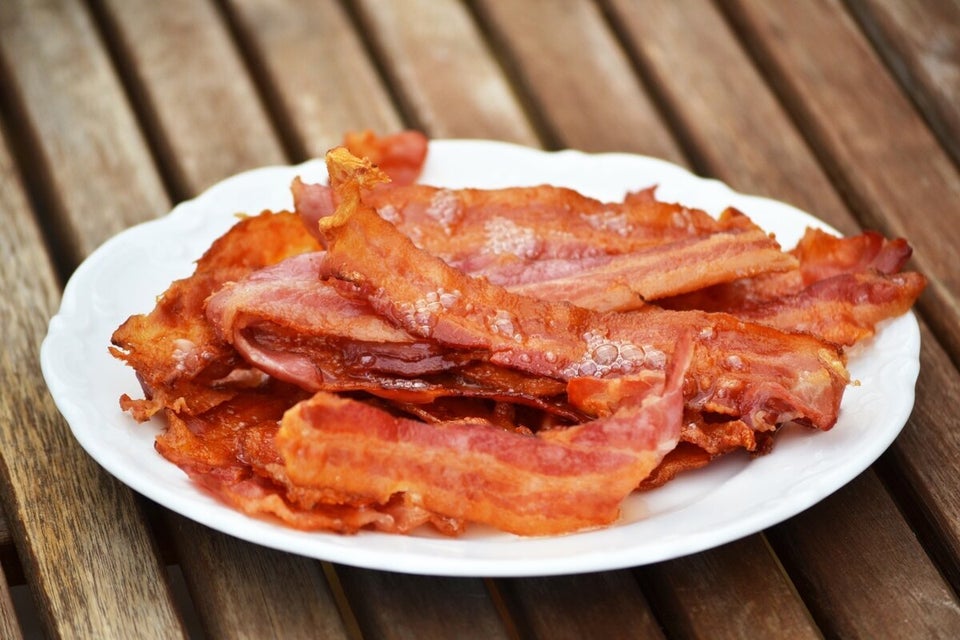
Eat like a Neanderthal? It doesn't sound appealing on first read, but the so-called paleo diet — supposedly influenced by the way our hunter-gatherer ancestors ate — has become increasingly popular over the past few years.
There are a lot of misconceptions about the diet, and some variations among those who follow it, but at its core it's a diet based on healthy animal protein, nuts, and vegetables, with no or restricted grains and legumes, seed oils, and high-sugar fruits and vegetables.
"It's a nutrient dense, hypoallergenic way to eat," says Toronto's Sarah Ramsden, a nutritionist and paleo fan. Ramsden changed her diet after receiving a diagnosis of multiple sclerosis, an autoimmune disorder, about five years ago. One year after being diagnosed, Ramsden turned down medication for the condition.
"I wasn't really wanting or willing to be on medication for the rest of my life," she says. Instead, she turned to paleo, and says that eating a whole, unprocessed, low-inflammation diet has changed her health tremendously — something that inspired her to study nutrition and led to her current career.
While anybody who is considering a major diet change should speak to their physician, and nobody should change medication without consulting professional advice specific to his or her personal health situation, upping your veggie intake and eating fewer processed foods is a solid plan all around. If you're wondering if the paleo diet might be right for you, here are 13 things you should know.
1. It's Not Just Plates Full Of Bacon: Yes, the paleo diet involves eating meat, but it doesn't mean that you'll just be eating bacon and eggs for every meal. Protein is important, nutritionist Sarah Ramsden advises, but your diet needs to include healthy carbohydrates and fats as well. "You really only need to be eating as much protein as you need to recover from your day to day activities," she says.
2. It Can Be Easier On The Digestive System: Many people feel an improvement of digestive symptoms once they switch to a paleo-influenced diet, Ramsden says, perhaps because it involves the cutting dairy and grains. "People report that persistent bloating, gassiness, and general discomfort clears up, thanks to the elimination of grains, legumes, and dairy," she says, "which for many people have a negative impact on digestive health."
3. It's More Than Just A Diet: "Paleo is more than just a diet, it's a lifestyle," Ramsden says. For example, fitness and physical activity are encouraged. There is a focus on energy and getting quality sleep to ensure optimum health. And stress management is another area where work is done, she said. Paleo has a lot to do with what you eat, but Ramsden explains that it looks at improving or removing all of the unhealthy aspects of our culture.
4. It Might Help With Autoimmune Disorders: Ramsden first discovered paleo when she was looking at holistic ways to treat multiple sclerosis, and says she's had success that shows up in her scans. "The typical Canadian diet is very inflammatory," she says. There is some evidence that a paleo-focused diet can help with other autoimmune disorders as well.
5. You Don't Have To Join A CrossFit Gym: A lot of people instantly think of CrossFit, the intense exercise program that focuses on strength, endurance and flexibility, when they think of the paleo diet, and vice versa. But while many CrossFitters do eat paleo, for a variety of reasons, you don't have to fling tires around to give the diet a try.
6. It Can Help With Your Energy: When you cut out sugar and refined carbs, your metabolism and blood sugar can become more stable, which means you'll have a more constant supply of energy. For that reason, going Paleo can help you fight that 3 p.m. crash. "It's the kind of diet to really help give you energy throughout the day," Ramsden says.
7. Paleo Can Help You Fight Sugar Cravings: Always looking for a chocolate bar? Because it eliminates sugar and encourages you to eat in a way that keeps blood sugar stable, the paleo diet can cut that "hangry" feeling and reduce sugar cravings, Ramsden says.
8. You Can Give It A Shot: If the idea of a wholesale switch is scary, Ramsden suggests committing to switching to a paleo-influenced diet for 30 days, then seeing what your results are and deciding on going forward from there. She is a Canadian representative for Whole 30, a "diet reset" program that aims to help followers decrease inflammation and improve metabolism health, among other benefits, and suggests a guided program as a way to test out paleo.
9. The Fats You Eat Are Healthy: Yes, there are fats in some of the foods more common on the paleo diet, for example, in eggs. But the point is to get healthy fats, Ramsden advised, particularly healthy animal fats from a healthy source.
10. You Should Add In Fermented Foods: Fermented foods are a great addition to any diet, including the paleo diet. Choices like kimchi and sauerkraut are full of healthy bacteria that will help with digestion and may improve your immune functioning.
11. You'll Want Quality Sources Of Protein: Don't just run to the supermarket for the cheapest cuts you can find, Ramsden advises. Because animal fat can store unhealthy additives like the hormones that may have been used to raise animals, you'll want protein from as clean and high-quality a source as you can get. "People need to balance their budget with the cost of a better quality animal protein," she says. If you are buying conventionally raised meat, go for leaner cuts with less fat.
12. It's Not Necessarily Low Carb: Yes, paleo involves cutting out grains and legumes, which are sources of carbs. But that doesn't mean you'll have no carbohydrates in your diet — or that you should, for that matter. Root veggies like taro have carbs, as do other vegetables like broccoli and fruits like berries. "The low-carb myth also comes from the fact that we load up on pasta, bread, etc. to fuel life at our desk jobs," Ramsden says. "We tend to eat far too many carbs to suit our activity levels, which has a significant impact on our health."
13. It's Friendly For The Gluten Intolerant: Because paleo diets cut out carbs like wheat and barley, which both contain gluten, it can be a good diet for those who need to or wish to avoid gluten. It's also a way to see how your body responds if you remove gluten from your diet, or at least cut it back.
